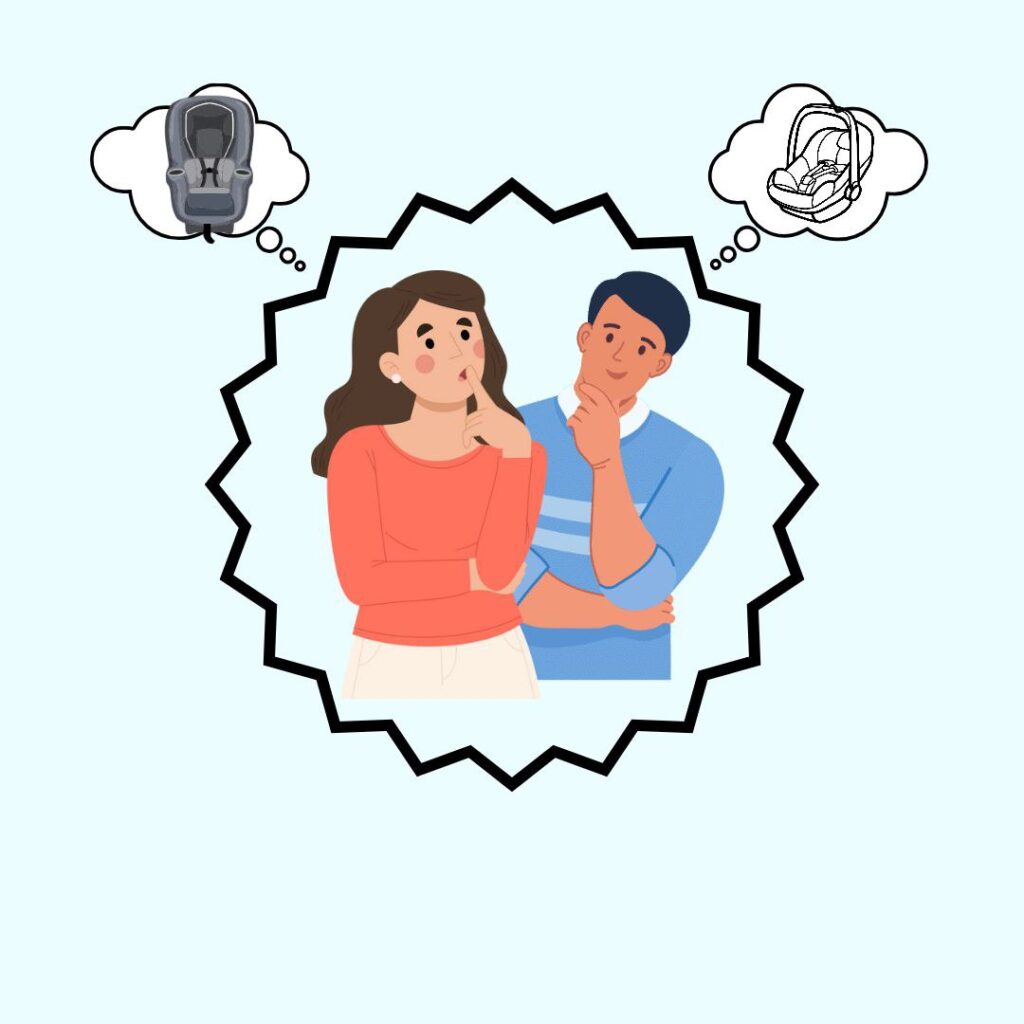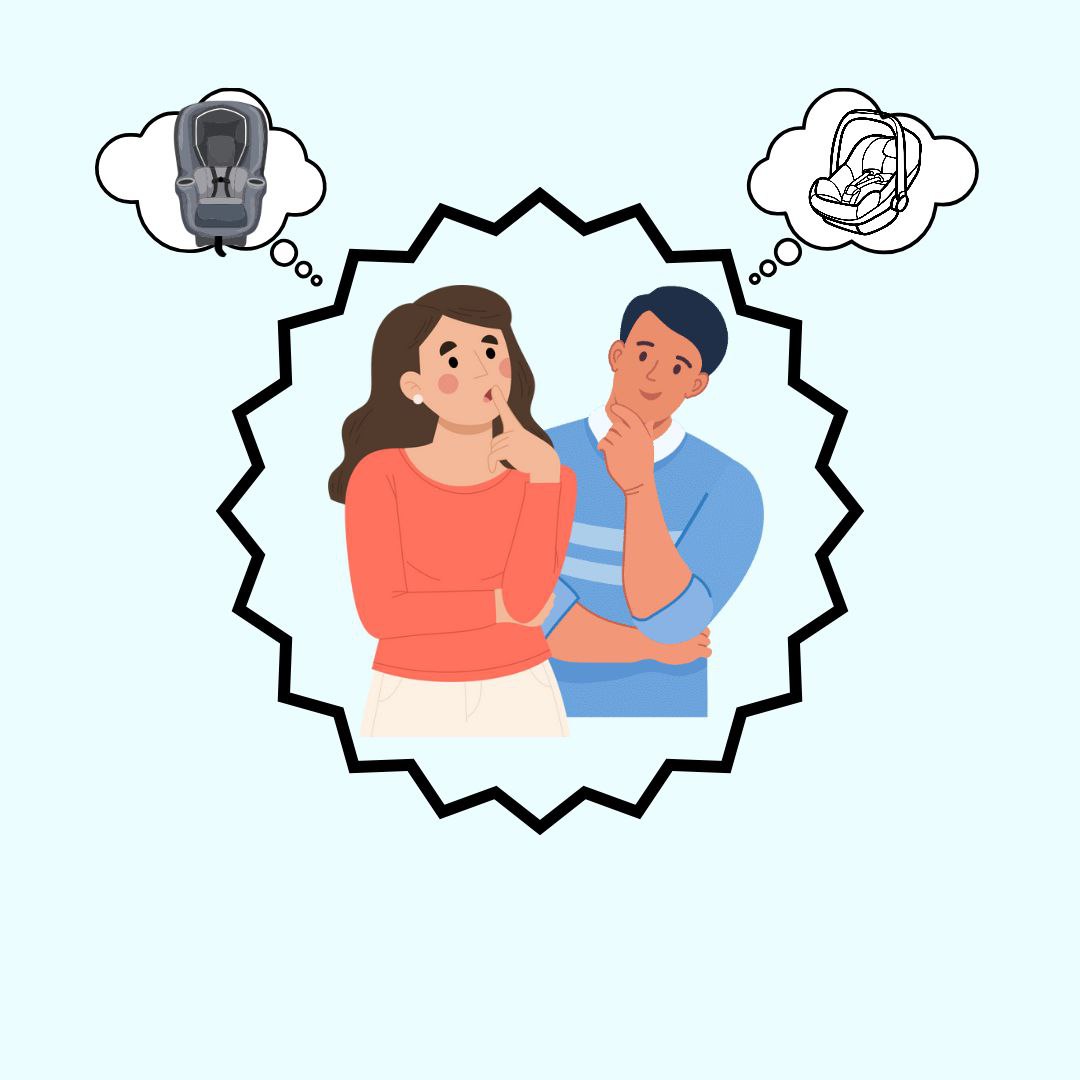FAQs About Car Seats

Q1 Are newer car seats safer than older models?
ANSWER : Modern car seats often incorporate advanced safety technologies like side-impact protection and energy-absorbing foam that older models may not have. Newer models are also designed to comply with the latest safety standards, which can change over time based on new research and crash testing data.
Q2 What is LATCH, and is it better than a seatbelt installation?
ANSWER : LATCH (Lower Anchors and Tethers for Children) is an installation system that helps secure car seats without using a vehicle’s seatbelt. While LATCH can make installation easier and reduce installation errors, it’s not necessarily safer than a seatbelt when used correctly. Always choose the method that provides the most secure fit and follow the weight limit for LATCH, which includes the child and the seat combined (usually around 65 pounds).
Q3 : Are inflatable seat belts compatible with car seats?
ANSWER : Not all car seats are compatible with vehicles that have inflatable seat belts. These seat belts can affect the seat’s performance in a crash, so it’s essential to check your car seat manufacturer’s instructions or contact customer support for specific guidelines on compatibility.
Q4 : What is an anti-rebound bar, and should I get a car seat with one?
ANSWER : An anti-rebound bar is an accessory attached to the base of rear-facing car seats. It limits the seat’s movement during a crash, reducing the forces on the child and providing an additional layer of protection. While not all seats come with this feature, it can enhance safety in a frontal collision.
Q5: Why are European car seats often different from U.S. car seats?
ANSWER : European car seats and U.S. car seats meet different regulatory standards. In Europe, all car seats must have load legs, which provide additional stability by connecting to the vehicle’s floor. These seats are gaining popularity in the U.S. for their added safety benefits, but they aren’t mandatory. Additionally, European seats often have simpler belt paths, requiring fewer steps for installation, whereas U.S. models emphasize more options with LATCH or seatbelt paths.
Q6 : What is a “no-rethread harness,” and why is it convenient?
ANSWER : A no-rethread harness allows you to adjust the height of the harness straps without having to take apart the seat. This feature is beneficial as your child grows, simplifying the process of ensuring the harness is positioned correctly at or above the shoulders for forward-facing and at or below for rear-facing.
Q7: How do I ensure my car seat isn’t counterfeit?
ANSWER : With the rise of online shopping, counterfeit car seats can be a concern. These seats may look similar to genuine products but may not have undergone safety testing. Always purchase car seats from reputable retailers and check for labels such as “This Restraint is Certified for Use in Motor Vehicles” or stickers confirming compliance with local safety standards.
Q8 : Can my car seat handle extreme temperatures?
ANSWER : Car seats are tested for safety under typical environmental conditions, but extreme heat or cold can affect the integrity of the seat. Extended exposure to direct sunlight can cause the seat’s plastic to become brittle over time. Using sunshades and parking in the shade can help, and ensuring the seat isn’t exposed to freezing temperatures will protect the materials.
Q9: What are i-Size car seats, and how do they differ from traditional ones?
ANSWER : i-Size is part of the European car seat regulation (UN R129) and focuses on using a child’s height instead of weight for seat selection. i-Size seats are compatible with ISOFIX systems and provide enhanced side-impact protection. They also require rear-facing travel until at least 15 months, as this position is safer for a child’s developing head and neck.
Q10 : How can I ensure my car seat stays hygienic without damaging it?
ANSWER : Regular spot cleaning is essential to prevent spills and crumbs from building up, but deep cleaning should be done sparingly. When deep cleaning, always follow the manufacturer’s guidelines for removable parts and avoid harsh cleaning agents. Protective car seat liners approved by the seat’s manufacturer can also help keep it clean while maintaining safety.


